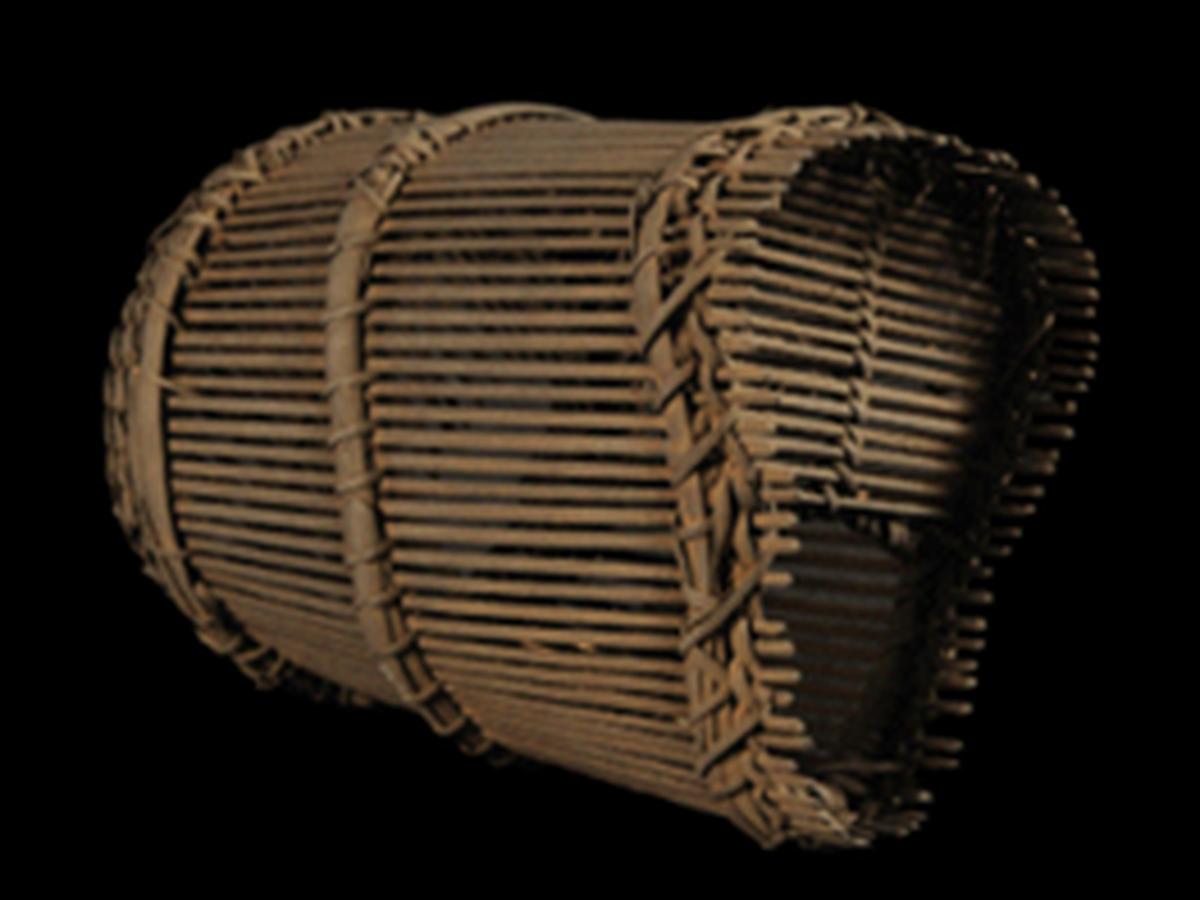State
Tribe Name
Art Type
short description
From the Angami Naga tribe-the people of the hilly land of Nagaland, one can appreciate the entire treasure of ecological wisdom and traditional knowledge systems pertaining to the life of the Naga people on sustainable living and resource consumption. The bamboo fish trap is very interesting and it shows the sound functionality along with the mastery of craftsmanship.The trap is made purely of strips of bamboo collected randomly. The base circularizes it for its use in flowing as well as stagnant waters. The body of the device is made up tightly woven strands of water through which fish cannot escape. Reinforcement to the structure obtains with three more split bamboo strips, coiling uniformly across the upper part of the trap. These bands aid in the integrity of the trap while retaining its cylindrical shape through the years of its use.
Thumbnail

Filter Postion
Left
Filter Background
Off
Theme
Filter Header Image

content
Image

description
From the Angami Naga tribe-the people of the hilly land of Nagaland, one can appreciate the entire treasure of ecological wisdom and traditional knowledge systems pertaining to the life of the Naga people on sustainable living and resource consumption. The bamboo fish trap is very interesting and it shows the sound functionality along with the mastery of craftsmanship.The trap is made purely of strips of bamboo collected randomly. The base circularizes it for its use in flowing as well as stagnant waters. The body of the device is made up tightly woven strands of water through which fish cannot escape. Reinforcement to the structure obtains with three more split bamboo strips, coiling uniformly across the upper part of the trap. These bands aid in the integrity of the trap while retaining its cylindrical shape through the years of its use.
Mostly fish traps of this kind are submerged in rivers and shallow streams, placing baits to several fish species, and checked at intervals. It reflects the most profound knowledge of the Angami about living aquatic life and their rivers and reflects the good Angami concern for ecological viability, as these "traps" would degrade after use thereby ensuring that the fishing remains sustainable.Such traditional fishing implements even now survive in some rural areas- this really serves not a little towards a livelihood but onward to the preservation of tribal knowledge and identity as well. It is a very simple trap design, yet loads into it the innovative and sustainable features inherent in indigenous technologies.
Mostly fish traps of this kind are submerged in rivers and shallow streams, placing baits to several fish species, and checked at intervals. It reflects the most profound knowledge of the Angami about living aquatic life and their rivers and reflects the good Angami concern for ecological viability, as these "traps" would degrade after use thereby ensuring that the fishing remains sustainable.Such traditional fishing implements even now survive in some rural areas- this really serves not a little towards a livelihood but onward to the preservation of tribal knowledge and identity as well. It is a very simple trap design, yet loads into it the innovative and sustainable features inherent in indigenous technologies.
Image Mode
landscape
promoted
On
Verified
Off
